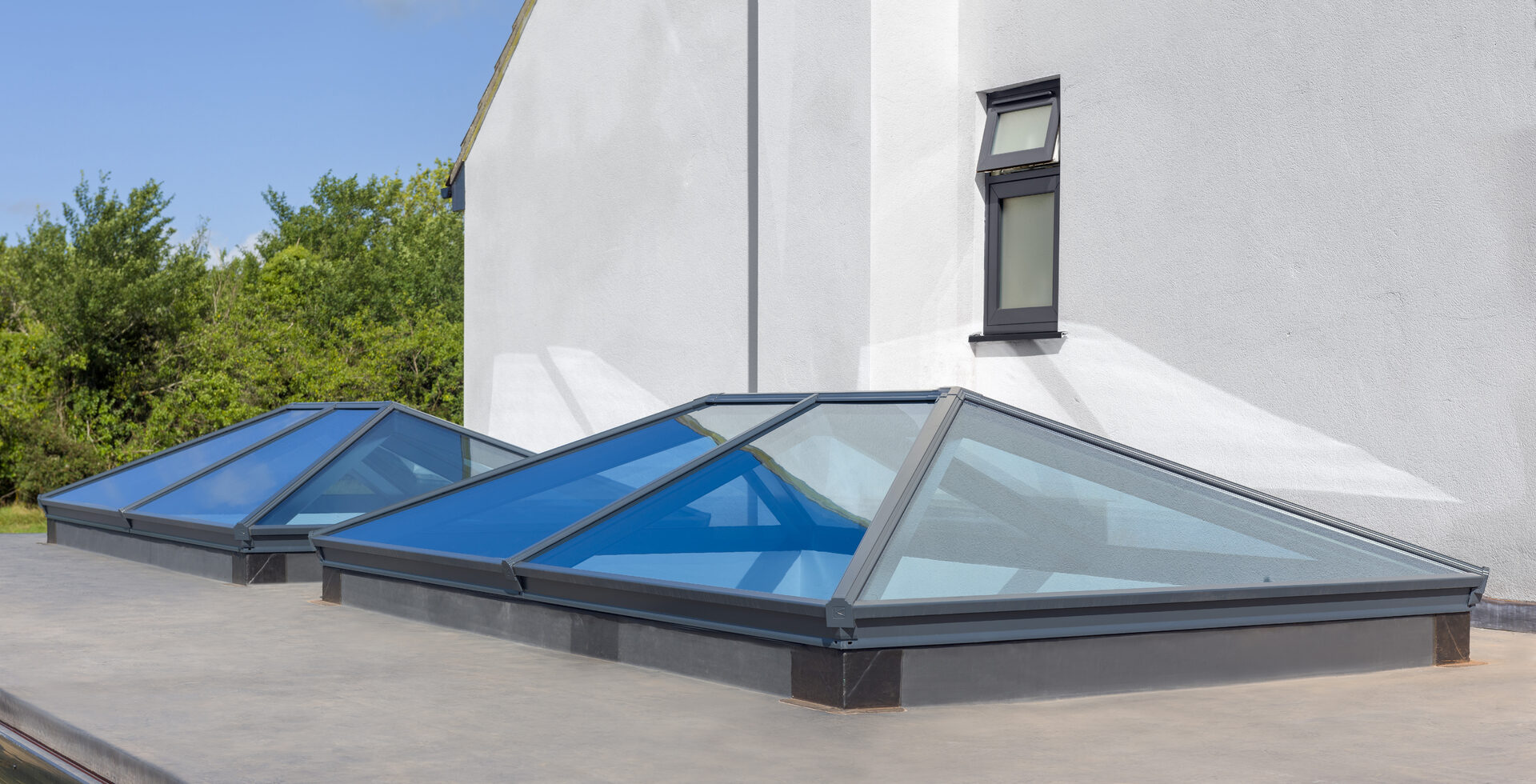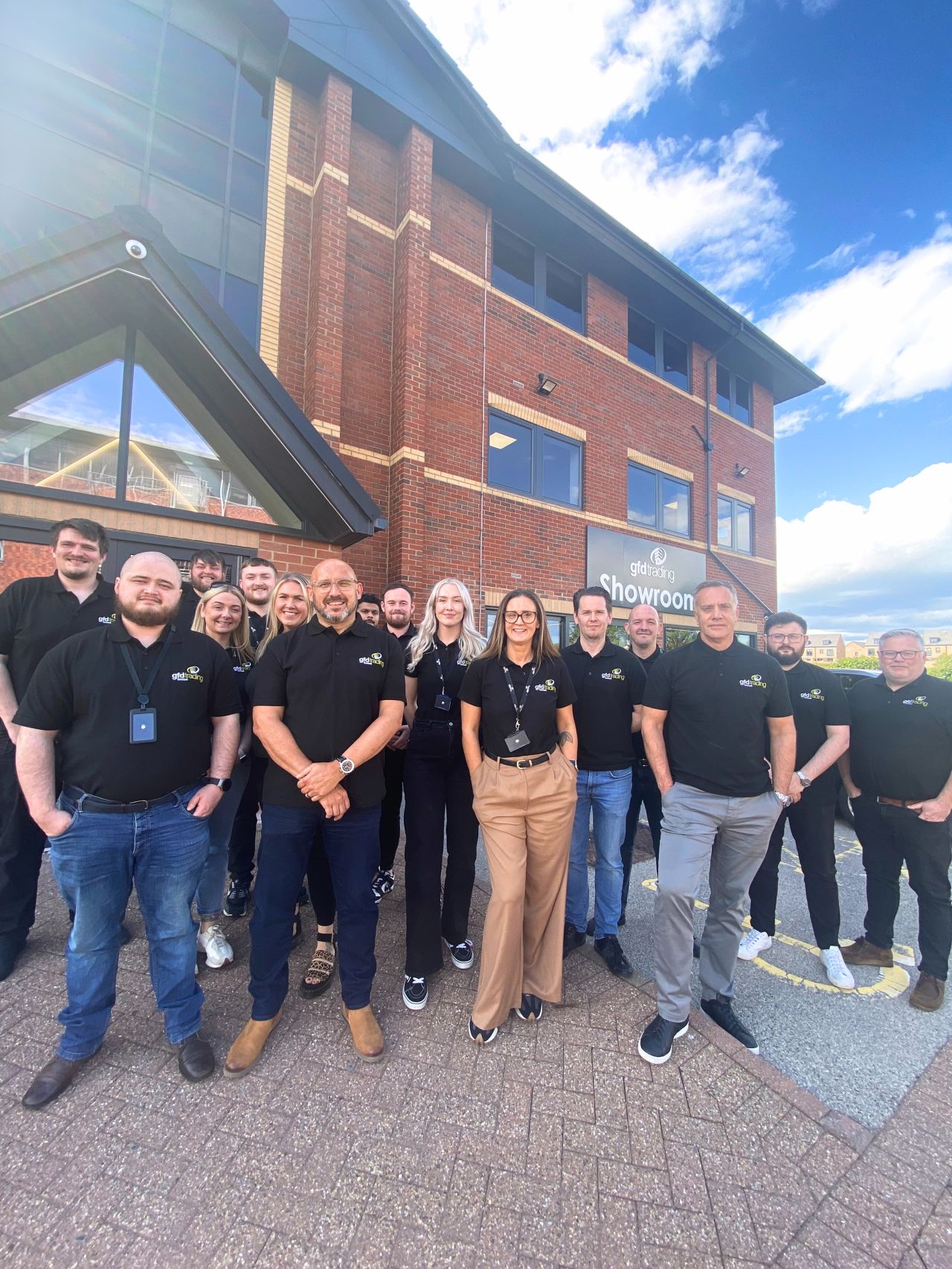Last Updated on 15 November 2024 by Team GFD
Roof lanterns bring a touch of charm and sunlight into our homes, creating an atmosphere of elegance and warmth.
However, despite receiving immense popularity as a stunning addition to many homes, they can often encounter one common issue – condensation.
The presence of condensation on roof lanterns can impact both their aesthetic appeal and functionality.
In this guide, we’ll explore the causes of roof lantern condensation, why it’s a problem and effective strategies to prevent it.
Looking for specifics in a hurry? Jump ahead:
- What causes roof lantern condensation?
- Why is condensation a problem?
- How to stop condensation on a roof lantern
- Experts in roof lanterns
- FAQs
What causes roof lantern condensation?
Condensation on roof lanterns is primarily caused by temperature differences between the interior and exterior of your home. When warm, moist air inside meets the cold surface of the roof lantern, water vapour in the air condenses into water droplets, leading to the formation of condensation.
In the case of an open-plan kitchen for example, the likelihood of experiencing condensation on your roof lantern increases, particularly due to the humid air produced by hob and oven appliances. However, there’s no need to be concerned, as there are several effective measures you can take to prevent condensation, as outlined below.
Why is condensation a problem?
Condensation poses several issues, including potential damage to the roof lantern structure, aesthetics and even the growth of mould. It can obscure the view, reduce the effectiveness of insulation and compromise the overall comfort of your living space.
How to stop condensation on a roof lantern
Addressing roof lantern condensation requires a multifaceted approach. Here are some common effective strategies to prevent and minimise condensation:
Ensure proper ventilation
Good ventilation is crucial for maintaining a balanced humidity level. Ensure that your home is adequately ventilated to allow moist air to escape and reduce the likelihood of condensation.
If you live in a property that is more prone to condensation, we’d recommend selecting a roof lantern that offers a ventilation option.
At GFD Homes, our roof lantern collection, for instance, provides the flexibility to add an opener to any of our roof lanterns. This feature allows you to introduce ventilation whenever it’s needed, helping you to create a more breathable environment and minimising the potential for condensation issues.
The Korniche Roof Lantern features expertly designed glazing bars that allows for a stunning minimalistic look.
Upgrade to triple glazing
Upgrading to triple glazing can significantly reduce temperature differences between the interior and exterior surfaces of the roof lantern, minimising condensation.
While our standard roof lanterns feature double glazing with excellent U-values, our Atlas Traditional Roof Lanterns range offers the option to upgrade to triple glazing.
It’s important to note that if you choose this triple glazing option, you won’t be able to add openers to your Atlas Traditional Roof Lantern too. We therefore recommend prioritising openers for ventilation as this is crucial for minimising condensation risks.
Choose self-cleaning roof lantern glass
Opting for self-cleaning glass with anti-condensation properties can help prevent the build-up of moisture and reduce the need for frequent cleaning.
You’ll be pleased to hear that we provide self-cleaning glass options as standard on our roof lanterns, so you don’t have to worry about cleaning a roof lantern.
Invest in a dehumidifier
Using a dehumidifier in areas prone to high humidity levels can extract excess moisture from the air, preventing condensation on your roof lantern.
Increase your household insulation
Improved insulation can create a more consistent temperature throughout your home, reducing the chances of condensation forming on the roof lantern.
Limit indoor moisture
Be mindful of activities that generate excess moisture, such as cooking and showering. Properly ventilate these areas and consider using exhaust fans to expel humid air.
Make sure to check with your local planning authority to find out whether you need planning permission for a roof lantern.
Consult GFD Homes; Experts in Roof Lanterns
If you’re looking for great-quality roof lantern options designed with reduced condensation risk, then we’re the supplier for you. At GFD Homes, we take pride in offering a diverse range of roof lanterns, each customisable to suit the unique aesthetics and needs of your home. Whether you prefer a sleek, modern design or a more traditional style, our range ensures there’s a perfect fit for every taste.
We’re also proud to offer a reassuring 10-year guarantee on all of our roof lanterns. This commitment to quality underscores our confidence in the craftsmanship and materials used in creating our roof lanterns, providing you with peace of mind about your investment.
Have questions and would like to discuss your roof lantern needs with our knowledgeable team? Feel free to contact us on 01642 309576.
For additional insights, tips and information on roof lanterns, be sure to check out our blog. It’s filled with a range of articles that delve deeper into various aspects of roof lanterns and all things home improvement.
To see a roof lantern in person, call us on the phone number above to book a visit to our showroom.
FAQs about roof lantern condensation
Are roof lanterns more prone to condensation?
While condensation can occur on any glass surface, roof lanterns can be more prone due to their exposure to temperature variations. Proper maintenance and preventive measures can mitigate this issue.
Are roof lanterns cold?
Roof lanterns can become cold surfaces, especially in the colder seasons. Upgrading to double or triple glazing and improving insulations helps minimise heat loss and cold surfaces.
How do you stop excessive condensation on a roof lantern?
Effective strategies include ensuring proper ventilation, upgrading to advanced glazing options, investing in a dehumidifier and managing indoor moisture levels.
Tailoring solutions to your specific situation is key to preventing excessive condensation.
Can condensation on a roof lantern cause damage over time?
Yes, prolonged exposure to condensation can potentially lead to damage such as mould growth, rotting or wooden components and degradation of the roof lantern’s structural integrity. Implementing preventive measures is crucial to avoiding long-term issues.
Can external factors, such as nearby trees or buildings, contribute to roof lantern condensation?
Yes, external factors like nearby trees or tall buildings can affect the airflow around your roof lantern. Proper landscaping and clearance around the roof lantern can help improve ventilation and reduce the likelihood of condensation.
Can installing blinds or shades help control roof lantern condensation?
Yes, installing blinds or shades can provide an additional layer of insulation, reducing temperature differences and minimising condensation. Always choose options that allow for proper ventilation when needed.
Are there specific cleaning methods to prevent condensation on roof lanterns?
Regular cleaning of the roof lantern can help maintain its transparency and reduce the likelihood or condensation. Use a mild, non-abrasive cleaner and follow the manufacturer’s guidelines for cleaning to prevent damage to the glass surface.
It’s worth mentioning that if you have a roof lantern featuring self-cleaning glass, like the ones we offer, cleaning the external glass won’t be necessary. The self-cleaning coating effectively breaks down dirt, allowing it to be easily washed away by rain.
Which roof lanterns are less likely to experience condensation?
Roof lanterns equipped with advanced glazing technologies, such as double or triple glazing, are less likely to experience condensation. These glazing options help maintain more consistent temperatures across the surface of the roof lantern, reducing the temperature difference that leads to condensation.
Furthermore, roof lanterns equipped with ventilation capabilities are less prone to experiencing condensation. The ability to provide ventilation allows moist air to escape from the room, addressing one of the main causes of condensation.

